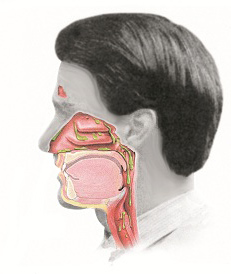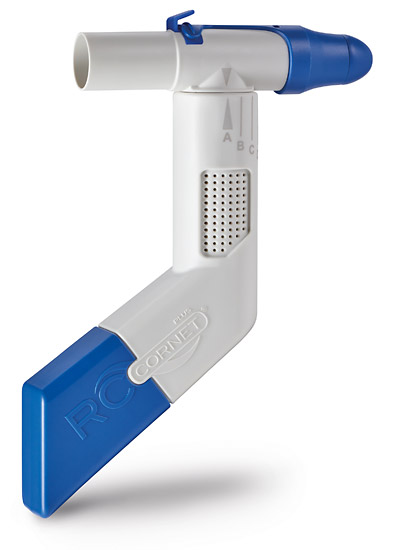Postnasal drip syndrome

© Fotolia.com
Something that is unusual to the development process is a phenomenon known as “stage migration”: Although the source of the disease is found in the upper respiratory tract, the progression of the disease largely takes place in the lower respiratory tract. How does this happen?
When the mucous membranes in the upper respiratory tract become inflamed and the nose is blocked, the secretions are unable to drain freely through the nose. With postnasal drip syndrome, they drip instead through the airways into the lower respiratory tract (see drawing below). As a result, the infection is transmitted to the lungs.

From a cold to bronchitis – How postnasal drip syndrome emerges
The cause of postnasal drip syndrome is related in most cases to an acute or chronic infection in the nasal area (rhinitis/sinusitis). A trigger can be the common cold, for example.
Aside from infectious origins, other underlying diseases may also cause postnasal drip syndrome. Allergic reactions in particular are common, but autoimmune diseases and a non-specific hypersensitivity of the airways may also come into question. In addition, postnasal drip syndrome may be associated with irritation in the stomach region, e.g., gastroesophageal reflux disease (acid reflux).
Coughing, throat clearing, mucus in the throat –
The symptoms of postnasal drip syndrome
Postnasal drip syndrome is one of the most common causes of chronic coughs. The cough is dry but may produce secretions. Patients also recognise postnasal drip syndrome from the unpleasant presence of phlegm in the pharynx and throat, which appears especially when lying down.
Other typical symptoms are a constant urge to clear the throat, hoarseness, and a feeling of obstruction in the throat. Even shortness of breath may occur in severe cases. Depending on the underlying disease, allergic symptoms such as headaches, facial pain, fever, and fatigue may also arise.
If the cause of the disease is not treated, the inflammation may also move to the lower respiratory tract for the long term. Therefore, postnasal drip syndrome is often a participant in the emergence of chronic pulmonary diseases such as bronchial asthma or chronic bronchitis.
RC-Cornet® PLUS NASAL
OPEP therapy for the upper respiratory tract – effective, simple and good
Which treatment helps with postnasal drip syndrome?
Mucus dissolution in the upper airways is of critical importance in the treatment of postnasal drip syndrome. Since it involves sensitive structures, a gentle approach is recommended:
- Respiratory physiotherapy with the RC-Cornet® PLUS NASAL frees up the paranasal sinuses of mucus, alleviates dry coughing, and does not involve the intake of drugs.
- Regular nasal irrigations with physiological saline solution, support the cleansing system of the upper airways.
- As a complement, a natural nasal spray with dexpanthenol as its active ingredient – e.g. RC-Pflege® N – protects the nasal mucosa from drying out.
In the case of serious and non-abating symptoms, additional use of a nasal spray containing cortisone and/or antibiotics are the method of choice. Depending on the cause of the disease, surgical intervention in the area of the paranasal sinuses may also be necessary.
Subscribe to our
BREATHE EASY Newsletter
Tips and information on healthy airways!
- for all who wish to breathe better
- free of charge and convenient e-mails
- compact newsletter once a month
For all those who deal with pneumological topics related to the respiratory tract in a professional context, please find here the subscription to the CEGLA FACHNEWSLETTER.

